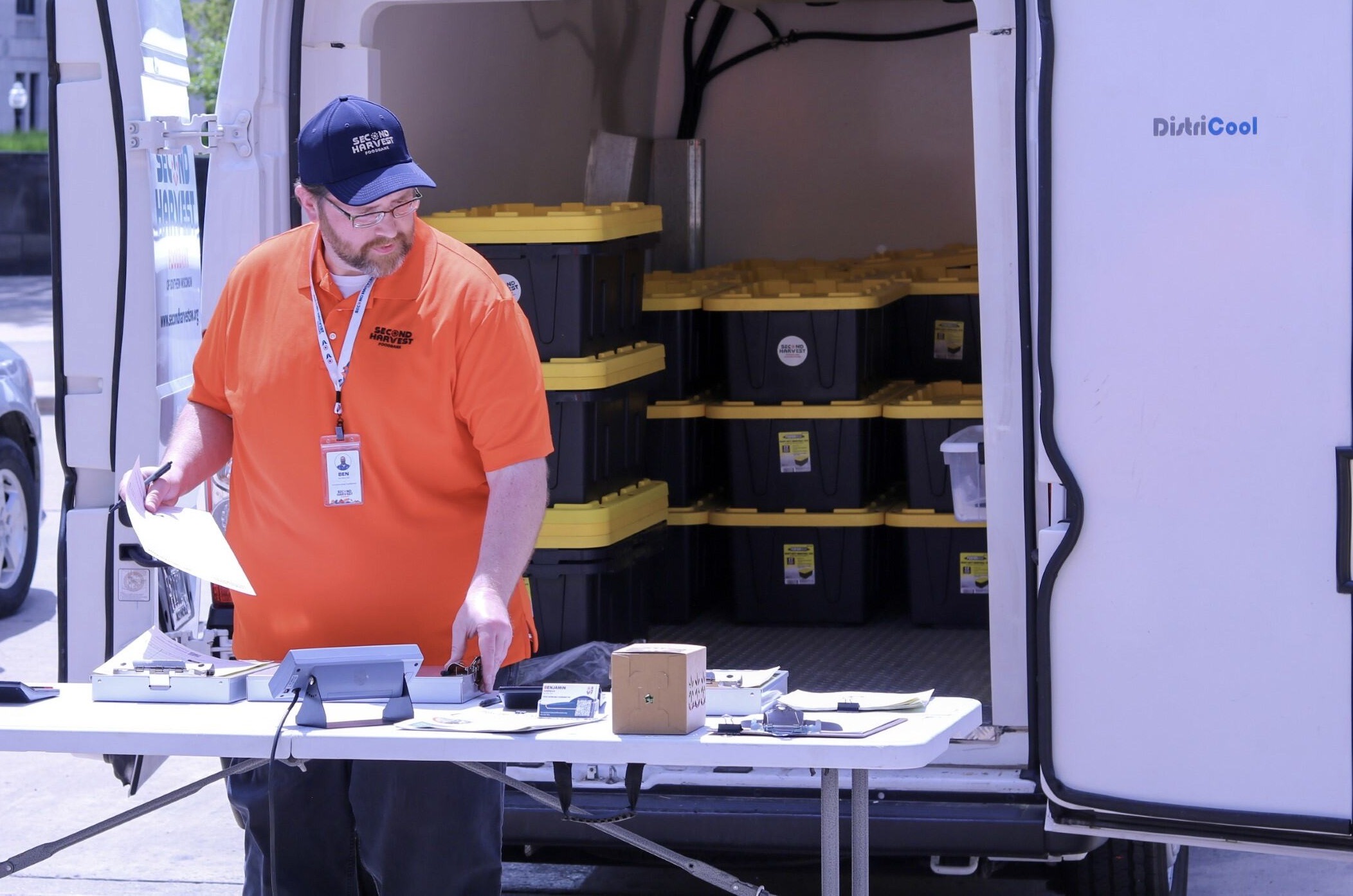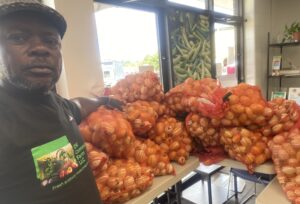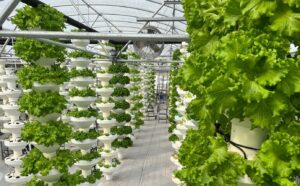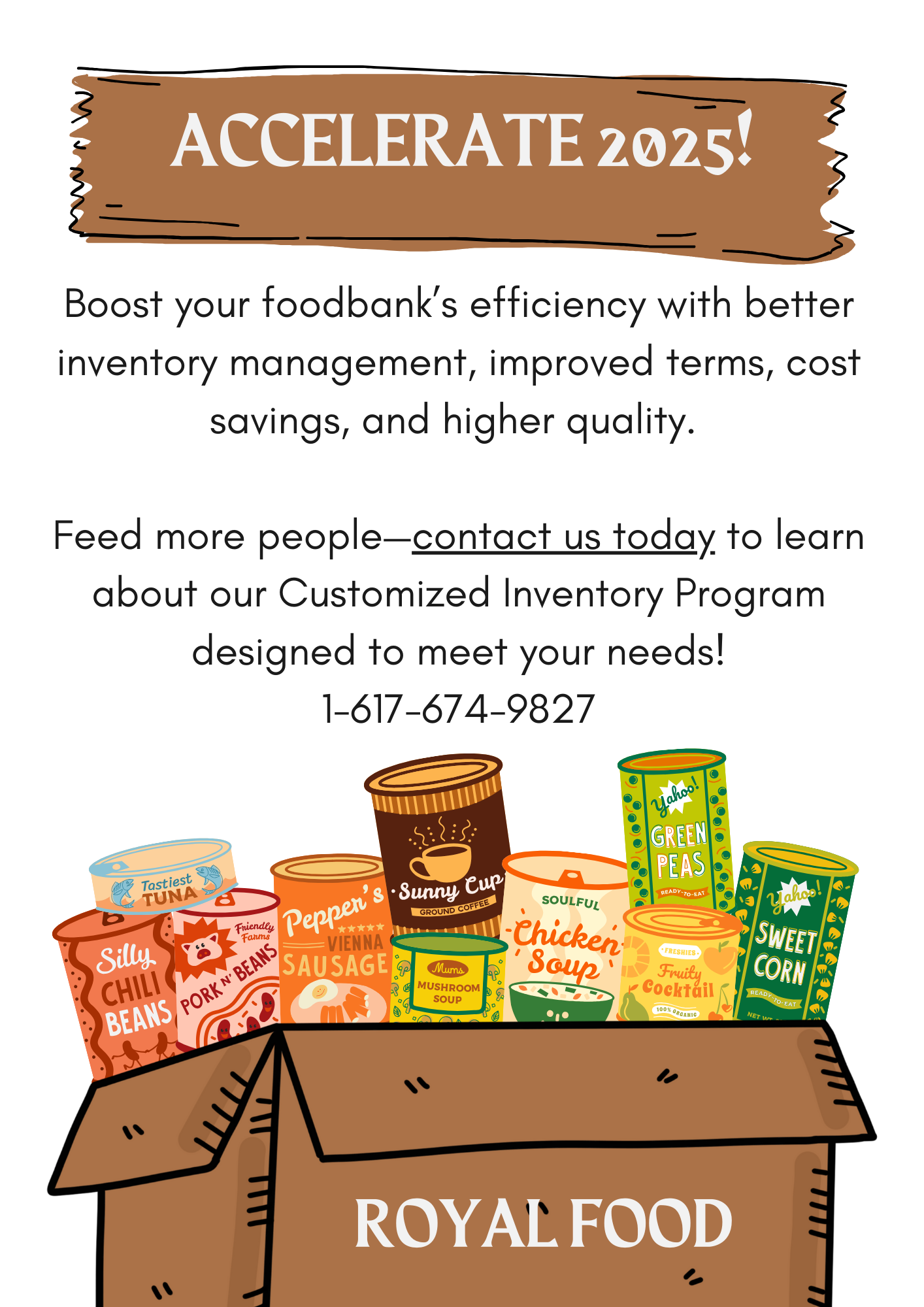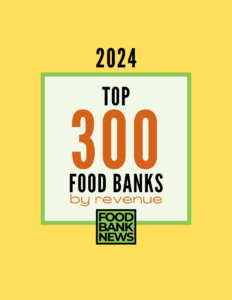Like many food banks, Second Harvest Foodbank of Southern Wisconsin began supporting local farmers by buying food from them during the pandemic. Before long, it was running a large farm-to-food bank program, purchasing produce at market rates from 55 farmers.
Recently, it figured out another way to support even more farmers, particularly those who identify as Black, Indigenous or People of Color (BIPOC).

“We discovered that the avenue to purchase from BIPOC farmers was not wholesale or even through aggregators,” said Michelle Orge, President and Executive Director at Second Harvest of Southern Wisconsin. “A large number of them sold at farmer’s markets.”
So the food bank began a new program, Market Harvest, which operates on site at farmer’s markets to purchase unsold produce at the end of the day at fair prices. The program is distinct from more traditional efforts to get farmers to donate their unsold food at the end of the day.
Last year, the food bank spent about $100,000 on a pilot that helped it purchase nearly 25,000 pounds of produce from more than 20 micro- and mid-sized marginalized farmers selling at farmer’s markets. It expects to work with at least as many farmers this year, and will be doing fundraising to support the program.
The program aligns the food bank’s purchases with its values, an approach that can add costs, but ultimately provides downstream benefits. Orge noted that before the pandemic, the food bank purchased only 20% of its food. Now it purchases about 40%, because the amount of food needed is so much larger.
“If we’re going to be purchasing, we should be purchasing in a way that can support the food system and the local economy, if that’s what we’re trying to repair,” Orge said. She noted that every dollar the food bank spends through the Market Harvest program generates $1.60 in local economic activity. “That money has value-add. It helps farmers and the local economy.”
The food bank takes certain things into consideration when working with local farmers. For example, it makes sure farmers receive their payments quickly, usually within a week, because they typically are in need of funds right away. It’s also exploring a newer partnership model in which it pays a partial amount in advance, giving farmers the ability to purchase seeds, and then pays the rest at harvest time.
“There are so many ways we could support farmers, and right now, the first way is to just make sure that they’re getting money for the food they’re providing,” Ogre said.
The food bank’s proposed budget for next year includes funding that would expand its community engagement activities. It already has invested in collecting and better utilizing data, as a way to ensure it is distributing food equitably throughout its 16-county service area. The proposed position, called “community voice,” would add inputs from people with lived experience, including farmers.
Second Harvest has found that working with farmers is all about building relationships. “If we want to work with more BIPOC farmers, we can’t just go get a list of them. We have to build better relationships. We have to ask more questions. We have to keep asking the questions that we think we already know the answers to.” – Chris Costanzo
CAPTION FOR PHOTO, TOP: A representative from Second Harvest Foodbank of Southern Wisconsin prepares to purchase unsold produce from farmers at a farmer’s market.
Like what you’re reading?
Support Food Bank News
